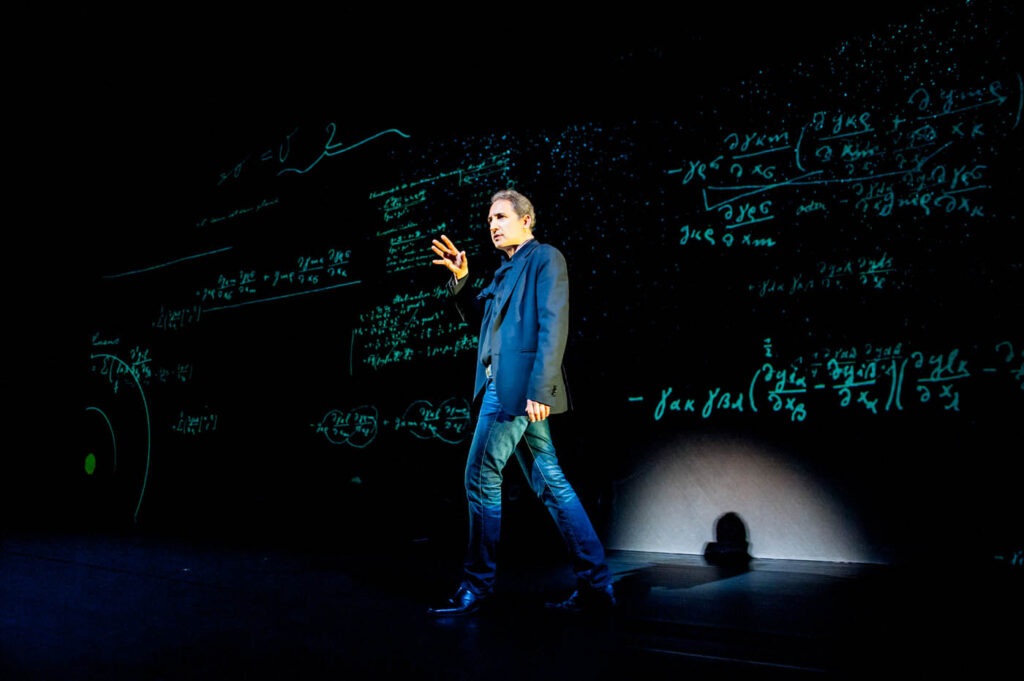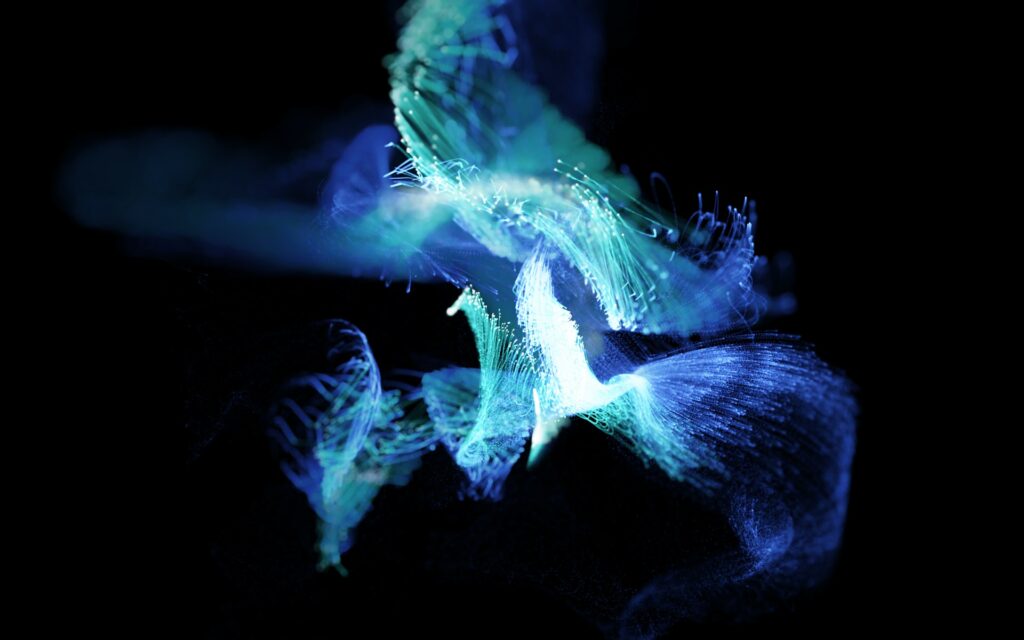It was in the earlier 1920s that after achieving all the fame in the world, Einstein was not still content. Brilliant breakthroughs in physics such as the Photoelectric Effect, the Brownian Motion, the Special and General Theories of Relativity, to name a few, had come from the genius mind of Einstein. But there was still something missing out – he believed there must be a unified theory that can combine all the forces of nature into a single elegant theory.
String Theory Explained
When Einstein started working on a unified theory, electromagnetism and gravity were the only known forces of nature, and the only subatomic particles were electrons and protons. Now, we know that rather than just two forces, we have four forces of nature – the other two being the strong nuclear force (that keeps an atomic nucleus together) and the weak nuclear force (responsible for nuclei decay).
Consider the device on which you are currently reading this article, let’s say your mobile. If we zoom into its components, we can see transistors, chips, and semiconductors. Going further deep into it will bring the world of molecules, then atoms, then electrons, and then the atomic nucleus.

The nucleus can be further traversed through, which opens a realm of protons and neutrons. If we select a neutron or a proton, and further magnify it, we have a notion of a quark, the most fundamental particle yet. And that’s where the traditional magnification stops and, thus, we can no longer have something beyond a quark.
This traditional approach in itself is sufficient to describe almost all of our world – through a theory known as the Standard Model of Physics. It describes all the elementary particles that our reality is made up of. However, it fails to explain one important force of nature – gravity.
Unlike other particles such as quarks (which make up protons and neutrons) and leptons (which include electrons) that fit amazingly in the mathematics of the theory, graviton (a hypothetical particle for gravity and responsible for gravitational attraction) fails to be a part of the Standard Model. Any previous attempt to fit graviton in the Standard Model has led to bizarre mathematics and an infinite amount of energy.
Here comes the String Theory. Considering your mobile device, let’s go microscopic again. The last time we had hit a roadblock at the quark. According to the String Theory, if we can enlarge a quark further, we can see a filament, a string of energy, that keeps vibrating. Just as a string of a violin that produces sound when you touch it, these filaments vibrate too, but instead of creating any harmonious note, they produce the particles themselves.

Instead of different matter and force particles, this theory replaces them with just a one-dimensional entity – tiny vibrating strings, that swirl, twist, and turn in different and complex ways, and from our macroscopic perspective, look like particles. A string vibrating with a particular note becomes an electron, while another string curled up and vibrating with a different frequency becomes a photon, and so on. Hence it is named String Theory, in analogy to the strings. Strings and only strings can smash together and recoil cleanly without leading to any physical impossible infinities.

A Candidate for the Theory of Everything
String Theory compensates the Standard Model for the exclusion of gravity. When the calculations for the energy and dynamics of strings were computed, it resulted in a massless particle of spin 2. This particle was the hypothesized graviton and led physicists to wonder if string theory could be a theory of everything that can unify gravity and quantum mechanics. Just by assuming that the fundamental particles comprise tiny strings, we can get the equations for general relativity and quantum mechanics working in harmony.
But…
As the String Theory was raising hopes of achieving a shared dream – of a unified theory, it got entangled in its own web of mathematics. The equations did not work in the realities of our world, in the four dimensions (three of space and one of time) that we are familiar with. Instead, the equations need six additional dimensions (to make it a total of ten dimensions), much beyond our imaginative capability. It is as though our three-dimensional world is a slice of a bigger nine-dimensional universe, but again, just thinking about it can make a person light-headed.

Another challenge faced by the String Theory comes again from the framework itself. It predicts too many universes to exist – a concept of the multiverse, the exact number to be 10^500, each with its own laws of physics. Even though such huge possibilities certainly give hope to finding a universe just like ours, in 2018, a scientific paper suggested that none of those hypothetical universes seemed like ours.
The Pursuit Continues
String Theory is preposterously fascinating to many physicists and scientists, mainly because it is “mathematically beautiful”, its equations satisfy one of the missing links that have troubled the greatest of minds.
Brian Greene, a famous theoretical physicist and a leading String theorist of our times, said in a recent interview – “In the last few years, there have been great theoretical breakthroughs in string theory. There’s been less contact with experiment than I would have hoped. I’d hoped that the Large Hadron Collider would reveal some of the hints of string theory. That has not happened. But that may well mean that the theory needs a bigger, better, more powerful machine to probe it, and that is not unexpected.”

Despite any experimental evidence supporting it, String Theory is so rich and amazing that it pushes our limitations much further, maybe our brains are not yet evolved to fully understand its inherent beauty, but once it happens, the doors of the multiverse will lay bare open and then it will be upon us to decide- will we take a leap of faith or not?


Very nice post. I simply stumbled upon your weblog and wanted to say that I have really enjoyed browsing your weblog posts.
In any case I’ll be subscribing on your feed and I am hoping you write again soon!
Excellent, what a weblog it is! This blog presents useful facts to us, keep it up.